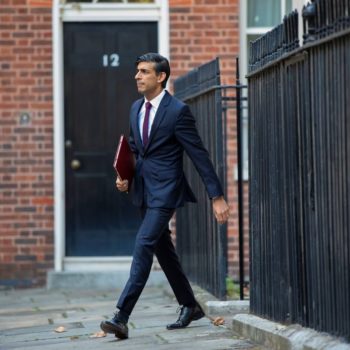European energy markets, technologies, business models, geopolitics and political objectives are changing rapidly. The EU’s approach to energy network infrastructure needs to keep pace. This requires reform to current delivery instruments and processes, including: aligning infrastructure policies with climate targets, updating definitions of energy security, broadening understanding of infrastructure boundaries and developing new tools to manage uncertainty.
Reassessing infrastructure needs
The transition of the EU energy system is both deep and rapid, driven by changes in technology, economics, policy constraints and consumer choice. Yet energy networks evolve more slowly: infrastructure investments are often capital-intensive, time-consuming to plan and construct, and once built have a lifetime of multiple decades. The infrastructure policy framework of today needs to be fully aligned with the transitions of the future. This paper reviews the macro-trends of the changing energy system and how the next generation of EU energy infrastructure policies can successfully adapt. These trends include:
- Decarbonisation: a shift in focus from marginal emissions reductions to a fully zero-carbon economy by mid-century limits potential for unabated fossil fuel infrastructure and requires investment to integrate renewable resources.
- Decentralisation: increasing generation and flexible demand resources at local level mean distribution grids are of increasing European significance.
- Digitalisation: advanced use of data, analytics and connectivity can reshape energy consumption and change the way energy networks are used.
- Sector coupling: electrification of heat and transport offers both a burden and an opportunity for power networks. New approaches will be needed to address the changing patterns of demand.
Realigning infrastructure and climate policy
New political commitments, such as the EU’s 2030 targets and the ratification of the Paris Climate Change Agreement, will accelerate energy system change and impose stronger constraints on emissions. This has wide-ranging consequences for energy infrastructures. A failure to fully incorporate these aims into EU energy infrastructure policy would increase risks for network developers and market actors and raise the overall costs for the transition. A realignment is needed to incorporate EU 2050 climate goals into European infrastructure planning, to facilitate progressive ratcheting up of climate ambition, to respond to the increasing pace of technology change and to fulfil EU commitments to phase out fossil fuel subsidies by 2025.
Redefining energy security
As Europe’s energy system evolves, the security threats it is exposed to are changing. On the basis of traditional definitions of energy security focused on physical supply, EU energy security in terms of physical supply has increased markedly and little new investment is needed on these grounds. Yet new security problems are emerging. To protect European citizens, EU infrastructure policies and funding instruments need to re-define energy security to include emerging issues such as adequacy of flexibility resources, the challenge of cyber security, and increasingly severe climate change impacts and extreme weather events.
Redrawing the boundaries of energy infrastructure
The integrated nature of modern energy networks is blurring the boundaries between infrastructure types. Increasingly interconnected transport, heat, digital and energy systems offer considerable opportunities, but stretch the limits of the current regulatory framework. A modern approach to energy infrastructure needs to go beyond the traditional categories of pipes and wires. This includes: recognising demand-side resources as infrastructure; integrating planning and operation of gas and electricity networks; tapping into the demand flexibility potential from electrified heat and transport; and enabling multipurpose projects such as offshore grids.
Responding to uncertainty in the infrastructure transition
There is broad consensus that the macro trends of decarbonisation, decentralisation digitalisation, and sector coupling will lead to radical changes in volumes and flows of energy through European infrastructure networks. Yet the precise timing, location and nature of these changes are uncertain, and this uncertainty will remain endemic for the foreseeable future. Given the speed of change and long lead times for major infrastructure projects, decisions need to be taken before all of these uncertainties will be fully resolved. Instead, EU energy infrastructure policies and institutions will need to be re-tooled towards actively managing the uncertainties of the transition.
Way forward
The new challenges to Europe’s energy infrastructure are increasingly recognised by actors across the system. Finding appropriate solutions will require re-tooling EU approaches to infrastructure planning, financing and institutional governance.
- Infrastructure planning: The EU’s upcoming 2050 roadmap should include a new assessment of long-term infrastructure needs. This assessment should guide network planning scenarios and selection of Projects of Common Interest.
- Financing: We see no justification for continued EU budget spending on fossil fuel infrastructure post-2020, given the EU’s international commitments on climate and on fossil subsidy phase-out. There is a strong case for the Connecting Europe Facility to be expanded, but to be broadened to a wider set of investments.
- Institutions: Changing infrastructure priorities should mean new roles and clearly defined objectives for the ‘regional groups’ that select projects of common interest. Beyond this, an EU-level foresight functionality is needed to help infrastructure planners keep pace with technology and economic change.


